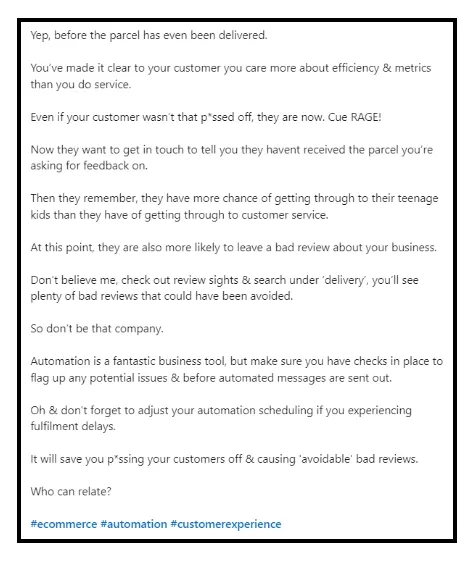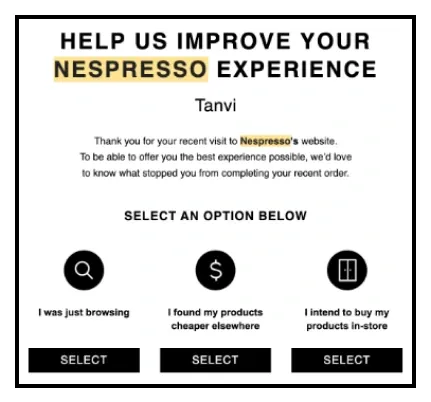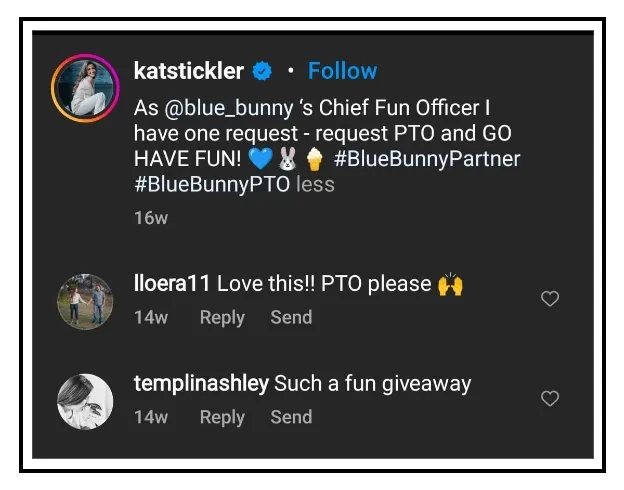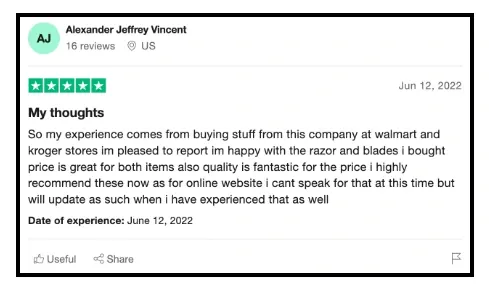“Ecommerce automation that can p*ss your customers off.”
That was the first line of a LinkedIn post by Michele Fleming Anwar, the Head of Sales at a customer and ecommerce support platform.
linkedin-post-by-michele-fleming-anwar-on-ecommerce-automation-part-1
linkedin-post-by-michele-fleming-anwar-on-ecommerce-automation-part-2
Michele’s post was about a common blunder that many ecommerce brands commit, i.e., asking for customer feedback on a product order even before it’s delivered. The eye rolls, the rage, especially if the product is late, and the premature request for a 5-rating on a product the customer is yet to receive is an outcome of faulty ecommerce automation. Automating delivery timelines and shipping workflows is necessary, but when these automated updates on the customer side of things show a mismatch, you know you need to do better.
If you are a brand that wants to avoid such ecommerce automation mistakes, check out our 12-point list. We talk about how to incorporate ecommerce automation checklists properly within your business.
But first, what is ecommerce automation?
Ecommerce automation uses specialized software to perform crucial tasks without human or manual intervention. These automated processes are integral to running an online store seamlessly and without prohibitive human resource costs.
You want to avoid filling in thousands of purchase orders, sending out hundreds of updates regarding an order status, or creating an ad or email every time your system identifies an interested customer. These processes are repeatable. You can automate them through an online platform. That’s what ecommerce automation is all about – automating ecommerce workflows that do not require manual action each time your online store needs to perform them.
Some classic examples of ecommerce automation include:
- Sending cart abandonment emails when customers leave a purchase process midway
- Adding discounts or free vouchers to orders above a certain amount
- Sending post-purchase surveys for customer feedback
Benefits of ecommerce automation
Like most automated processes, ecommerce automation primarily focuses on saving your team’s time, improving accuracy, and fast-tracking repetitive tasks. Let’s see how.
Benefit 1: Increase your team’s bandwidth for strategic tasks by reducing mundane deliverables
Identify any business function, let’s say marketing. Ask your marketing team to list everything it does daily, however minute. You will quickly realize several tasks on that list are mechanical and repetitive. They lend themselves to automation.
When you invest in automating those deliverables, your marketing team will have more time to focus on value-added decisions and strategic tasks. Let’s consider one example. That one individual on your team – let’s call her Judy. Her sole job is to ensure that all posts on your social media platforms go live at a specified time each day.
Everyday = repetitive; posting on a platform = mechanical.
When you start using an automation tool for social media posts, Judy has more time to strategize social media posts that would resonate with your customers. She has more bandwidth to carefully curate the creatives with your designer. She can measure social media performance better and optimize posts for higher resonance. Judy might even find the time to upskill herself, help out with other departments, and improve her job satisfaction. A win-win!
Similarly, even the best ecommerce automation tool is not about replacing human skills. Instead, it’s simply about helping your employees perform better.
Benefit 2: Scale your ecommerce business faster
Since you are increasing operational efficiency by automating most of your mundane tasks, you will improve overall output – machines are known to work faster than humans, after all. Simultaneously, you reduce the human resource cost on tasks that specialized tools and platforms such as Gusto HR software can perform more efficiently. The tasks you automate will meet overarching goals like improving customer satisfaction, optimizing marketing campaigns, streamlining accounting systems like monthly payroll, etc.
These create the perfect launching pad to scale your business – you’re optimizing your business investments in tasks and tools that genuinely bring value.
Benefit 3: Improve task and data accuracy
When you automate a task, you are handing the reins to a machine-learning tool that won’t commit human errors. And yet, it will be faster. As a result, your outcomes will be more consistent and accurate.
Most automation tools are built on AI, enabling daily data syncs from siloed systems, allowing you a single source of truth for your decisions. Ecommerce automation is an essential component of building a data-driven business.
12 steps in your ecommerce checklist
Not all your business functions or deliverables lend themselves to automation. So you must go about this process with carefully curated use cases and specialized tools. Let’s dive right into Lifeight’s recommended 12-point ecommerce automation checklist for specific workflows. Feel free to kickstart your Shopify ecommerce automation with this list.
1) Inventory management to ensure order fulfillment
Keeping track of products running low will ensure you don’t commit items for orders you do not have in stock. With automated inventory management, you can set the threshold of inventory you should have at a minimum. You will get an alert as soon as the number dips below the threshold. As a result, you won’t have to check for inventory levels frequently and manually while ensuring order fulfillment and customer satisfaction.
A best practice for inventory management is to incorporate batch inventory tracking, i.e., classifying your inventories as per product categories. It allows you to take action when even one of the products in that category is running low.
If you have a store on Shopify, you can check out numerous inventory automation tools like Low Stock Alert, Stockbot Low Stock, etc.
2) Order management for a seamless order-to-delivery process
If you run a small Etsy shop, this may not be necessary because you pack, label, and dispatch individual orders yourself. But if you want to grow your ecommerce brand or already have high order volumes, automated fulfillment solutions will come to your rescue. These will receive and alert you of new orders, track the orders out for delivery, and even coordinate dispatch and delivery. All of it with minimal human oversight, enabling seamless deliveries at low cost.
There are many options out there, such as ShipStation and Netsuite. Automated order management doesn’t have to be expensive if you are an early-stage DTC ecommerce brand. For example, ShipStation’s monthly plan starts at $9 for SMEs. Netsuite also helps create omnichannel experiences for customers when they want to place orders. Brands can unify ecommerce and physical POS to provide customers with personalized shopping experiences across channels.
You could also go down the trusty ecommerce automation Shopify order management route if you have international orders and require geographically diverse payment methods.
3) Data security to protect your customers and your brand reputation
As an ecommerce brand, you handle significant sensitive data, including customers’ personally identifiable information, passwords, credit card details, and more. Unfortunately, this information lends itself to payment fraud. Your business, too, has confidential information that you can’t afford to share with miscreants, such as business plans, forecasts, and campaign spends.
Without an on-the-ball data security framework, you could expose your customers and brand to fraud, brute force attacks, or SQL injections. All of these access and misuse sensitive information in an unauthorized manner. Retailers spend over 10% of their annual budgets on ecommerce fraud protection. DTC brands can’t get left behind.
Manual data and security handling increase the risks of fraud and data leaks. Leverage ecommerce automation tools specifically built for data security to ensure that your team is notified of every threat before they happen. Shopify Protect is one example of tools for fraud prevention in ecommerce transactions.
4) Customer support for transparent, always-on, always-delightful CX
Creating positive customer interaction doesn’t always mean face-to-face or even live agent support. You can deliver real-time support using chatbots, automated email responses, and IVR systems for customer queries and WISMO updates.
Robust customer support automation tools are not limited to customer interactions alone. They add value by providing critical data for process improvements and business decisions. For example,
- Curating frequently asked questions by keyword identification using NLP, which can help you create an easily accessible FAQ on your website and reduce customer calls
- Turning unstructured data like call records into insights to help evolve CX and storefront UI
- Collecting consent-based customer data like phone numbers for SMS subscriptions or email campaigns
5) Customer segmentation for holistic consumer insight and hyper-targeted campaigns
You can automate this vital process using tools that identify and delineate your target audience based on particular demographics and behaviors. The goal is to make customer segments as specific as possible. For example, “females aged 18-24 from Minneapolis who spend a minimum of $500 on clothing and use Instagram for college outfit recommendations.” You can target this segment with personalized emails or SMS, upsells, and cross-sells. Ultimately, this will improve your average order value for each customer.
You can track and use behavior data points by ingesting them on automation tools built for segmentation, such as Lifesight Engage. It will sort through your customer profiles and data to create specific segments for specific campaigns.
Customer segment automation also automates the RFM segmentation model. This allows you insights into how recently a customer made a purchase, how often they purchase from you, and how much they have spent on your products so far.
Both these models, easily curated using automation tools, can keep your customers returning with hyper-personalized marketing and experiences.
6) SMS marketing to keep your customers engaged
SMS marketing has a staggering 98% open rate and a 45% conversion rate and forms the cornerstones of customer retention but only when done right.
The best automation tools for SMS help you implement best practices efficiently. These include taking explicit consent from your customers before sending them marketing communication and allowing them to opt out. Crisp personalized SMSes that don’t waste your customers’ time, have appropriate disclaimers, and compelling CTAs seem like a lot of effort. But they are the only way to do SMS marketing right. You can achieve it with SMS marketing automation.
automate-sms-marketing-to-keep-your-customers-engaged
Princess Polly, a rockstar DTC brand built on the foundation of SMS marketing best practices.
The returns of SMS marketing are proven. You can give SMSBump and Postscript, an SMS tool built for Shopify, a try.
7) Email marketing for hyper-focused customer retention
You can boost your email conversion rate by automating the process of sending emails to your customers. An automation platform can implement the entire email lifecycle, from welcome and cart abandonment emails to offers, win-back campaigns, and customer feedback.
If a human representative had to personalize these emails for each customer in email drip campaigns, it would be arduous and result in minimal ROI.
automate-email-marketing-for-hyper-focused-customer-retention
An example of Nespresso gauging customer feedback through email
Automating email marketing for timely touch points will help onboard and retain customers easily.
8) Social media management to save time on engaging customers where they spend most of their time
Social media management lends itself to automation. Chatbots on Facebook and Instagram Messengers, automated query responses, and, most importantly, keeping your social handles updated – all make for excellent ecommerce automation use cases.
The critical steps of ecommerce automation for social media include:
- Generating content ideas and outlines for social media posts based on past posts’ performance
- Creating performance reports with engagement metrics
- Scheduling posts and comments, repurposing content and republishing posts within fixed timelines
- Social media ad automation (more on this follows in this blog)
Popular tools like Hubspot and Sprout Social automate the essential social media deliverables in your ecommerce automation checklist.
9) Influencer marketing for word-of-mouth on trusted social media handles
Affiliate marketing has gained significant relevance in the past few years, especially influencer marketing. Your customers are increasingly trusting product recommendations from relatable influencers rather than those from brands. This is traditional word-of-mouth marketing at an elevated level.
automate-influencer-marketing-for-word-of-mouth-on-trusted-social-media-handles
Blue Bunny engages Kat Stickler as a persuasive influencer in her role as ambassador and “Chief Fun Officer” in an engaging year-long activation.
Having an influencer program within your toolkit will mean taking care of:
- Onboarding your influencers with contracts, brand guidelines and digital signatures
- Commission tracking
- Payouts and bonuses
- Creation of codes and campaign-specific KPIs
- Running giveaway campaigns seamlessly
- And much more
This requires a dedicated influencer management platform that automates some processes to run your influencer program smoothly. Multiple stakeholders are involved in these programs, and each influencer requires a separate contract and terms of service, among other variables. Your best bet is to streamline the moving parts with a robust ecommerce automation tool.
Tools like Gatsby and Refersion have proven to help ecommerce brands automate influencer marketing processes with ease.
10) Accounting for complete financial transparency for all stakeholders
Running an ecommerce business can feel like a wrestling match with paperwork, number crunching, and hundreds of Excel sheets flying around. Calculators are your best friends, and excel formulae feel like a life-saving apparatus.
Instead of laboring over report after report of projections, revenue, and cost analysis, you can simply add accounting automation solutions to your ecommerce stack. Bookkeeping solutions automate payment and billing processes. They provide a dashboard to document your finances for key stakeholders and alert you on pending bills, incoming payments via orders, subscription figures, and so on.
Some of the best ecommerce automation tools for accounting include Xero and Quickbooks Online. Both come with flexible plans and free demos and trials.
11) Advertising so you can focus on marketing strategy, not ad execution
Automated ads work differently depending on the platform you are showing these ads. The crux is that you provide advertising goals, target audience, product details, timelines, and other similar components. The advertising automation platform creates personalized ads, bids for space, and runs the ads with minimal human intervention.
automate-advertising-dsc-example
Dollar Shave Club’s inclusive ad campaign for razors, as seen on Facebook.
Let’s take Facebook Automated Ads as an example. You input your goals for the ad, and the platform creates multiple versions of the ad. It gives you custom audience and budget suggestions. It runs ads per your timeline and budget and suggests changes based on specific performance insights. You get notifications to optimize your ads after tracking the performance for some time. All of it ensures high ROI on Facebook Ads when done right.
Other options include:
- Amazon Ads at the point of sale – most customers visit Amazon with the intent to shop
- Google Smart Shopping, which automates the bidding and placement of product ads
- Instagram promoted posts
- Among many others
12) Customer reviews to make your customers feel heard
User-generated content is a goldmine for ecommerce brands. Detailed product reviews, testimonials, comments on social media posts, and other forms of customer reviews should be easy for customers to post and for you to track and act on when required.
automate-customer-reviews
Partnering with platforms like Trustpilot, which help you track reviews of your ecommerce business, can automate the tedious process of scouring through the Internet to find what your customers say about you. You can use Yotpo to build your brand reputation using user-generated content like positive reviews as the crux of your campaigns. This is also word-of-mouth marketing; your customers will trust what fellow buyers have to say about your product, service, or brand.
Automate retention marketing with Lifesight Campaign Optimization
Do you know the most significant goal you will meet if you implement the ultimate ecommerce automation checklist outlined in this blog?
Customer retention. The silver bullet.
The 12 ecommerce automation use cases listed above lead to improved customer satisfaction, which eventually keeps your customers returning. 89% of organizations understand the link between excellent customer service and customer retention. The probability of selling to a new customer or one-time buyer is 5%-20% as opposed to 60%-70% for returning customers.
Lifesight’s Campaign Optimization powers your customer retention engine across the lifecycle. It supports marketing automation and messaging through customer segmentation. It makes your shipping process seamless and transparent by managing related customer communication. Lifesight also delivers revenue reporting and analytics for complete control and transparency on your finance and accounting processes.
We’re the latest entrant in the DTC tech stack with a single-minded agenda – powering DTC ecommerce brands’ retention automation with customer data.
Sign up to Lifesight to uplift your retention game with.
You may also like
Essential resources for your success
































































